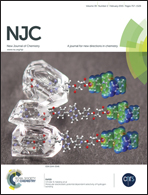Application of the polyphenylene ether-ether-sulfone ultrafiltration membrane for concentration of antioxidants from the Phyllitis scolopendrium L. extract
Abstract
The main objective of this study is to concentrate the antioxidant bioactive compounds from the hydro-alcoholic extract of Phyllitis scolopendrium through the poly(1,4-phenylene ether ether sulfone) (PPEES) ultrafiltration membrane. The PPEES membrane was prepared using the phase inversion method. The total content of phenolics and flavonoids, HPLC profile of the main phenolic compounds, and antioxidant and anti-tyrosinase activities were also determined in the microfiltrate, permeate and concentrate. When the PPEES membrane is used the concentration of polyphenols and flavonoids is higher, reaching the retention index of 0.785 and of 0.683, respectively, than that measured in the case of processing the feed through the PSF membrane. PPEES membranes showed a higher concentration towards anti-tyrosinase compounds (71.9 ± 4.3%), compared with the PSF membranes (58.7 ± 2.9%). The obtained results proved that the PPEES membrane we have prepared is suitable for the bioactive compound's concentration from the herbal extracts. This could result in their wide application in the food and pharmaceutical industries.


 Please wait while we load your content...
Please wait while we load your content...